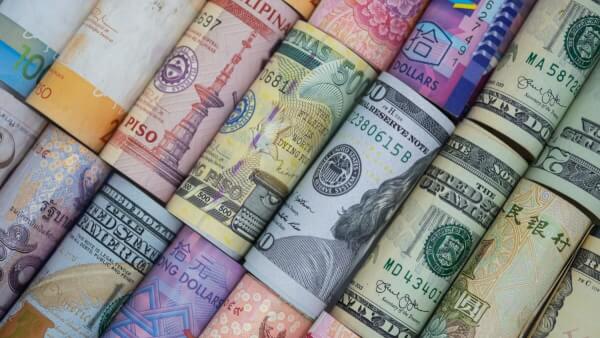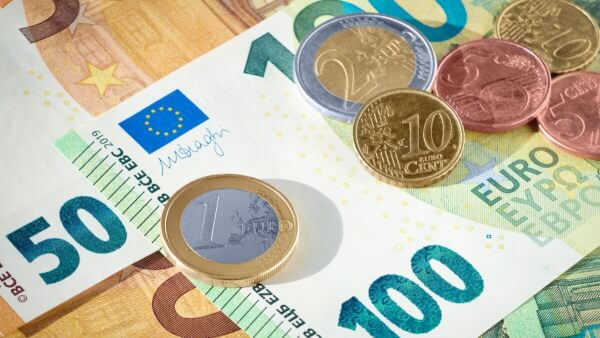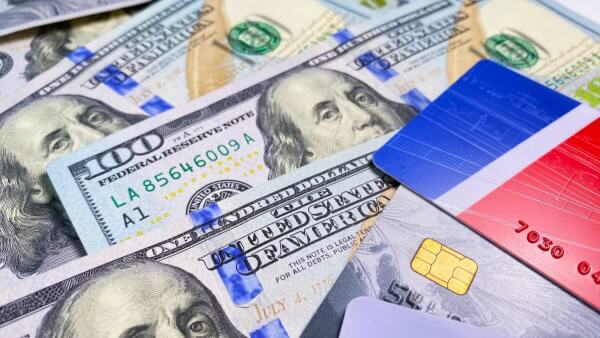How to open a foreign currency account in the US
Wondering how to open a foreign currency account in the US? Struggling to find information? Read on to find out what you need.

Capital One®¹ doesn’t charge foreign transaction fees on its credit cards², or on spending with your Capital One 360 debit card³. However, when you’re abroad, you may still end up paying more than you’d expect thanks to the way banks work out what exchange rates to offer you.
In this article, we’ll tell you what you need to know about using a Capital One card overseas, plus we introduce the Wise account which supports 40+ currencies for holding and exchange, making it easier than ever to avoid foreign transaction fees when you send, spend or exchange.
Capital One has a wide range of credit cards, and you can also get a debit card linked to your 360 Online Checking account. Some cards are only available if your credit status is excellent, while others may charge you an annual fee or require an initial deposit.
Others may add a fee for transfers for a period after you sign up for the card, or charge a different Annual Percentage Rate (APR) of interest depending on your status. Eligibility criteria vary, so check those for the card you’re interested in carefully.
Also keep in mind that if you’re looking to withdraw cash, credit cards carry a cash advance fee, which is usually either $5 or 5% with Capital One credit cards, and can also have a higher interest percentage when you get cash. You can read more about withdrawing cash in the ATM fees section.
To give a bit of a feel for the credit card options available from Capital One, here’s an overview of some of their most popular cards. Compare the full range of 30+ cards, online on the Capital One website⁴.
| Card name | Annual fee | Other aspects to consider |
|---|---|---|
| Platinum MasterCard® | None | Fair credit required |
| Venture Rewards | 95 USD | Excellent credit needed - earn rewards as you spend |
| Savor Rewards | 95 USD | Different card options available, including for various credit scores and for students |
| Spark 1.5% Cash Select - Excellent Credit | None | Different cards offered based on credit score, with different cash back opportunities |
| Spark 2x Miles | None in year 1, then 95 USD | Earn air miles when you spend |
| Venture X Rewards | 395 USD | Earn higher rewards for spending, excellent credit score required |
| Quicksilver Rewards | None | Different cards offered based on credit score |
Note: details correct at the time of writing - 04.12.2024
You might think that you’ll always get the same rate when buying things abroad. That’s not how it is. You can easily only discover this once your bill or statement comes in, but keeping up with a few things can take away this stress.
It’ll help you to know about the mid-market rate. It’s key to getting the best deal. If you search for exchange rates online, the figure you’ll see is usually the mid-market rate. Banks use this value when trading currency with each other. When you use a foreign ATM or buy something while traveling, though, you may find the conversion is done with an exchange rate which includes a markup - a fee.
You may find it worth looking into another alternative, the Wise account – which has the option of a multi-currency debit card – lets you convert to foreign currencies and then use your money without foreign exchange markup.
Use Wise to spend and withdraw all over the world, and to send money to dozens of countries and in dozens of currencies with a single account. All Wise currency exchange uses the mid-market rate with clear, low fees to pay*. Spend in 150+ countries, send money to 160+ countries, and hold 40+ currencies, all with Wise.
Get fee free international ATM withdrawals, up to 100 USD/month, with the Wise card. Keep in mind that ATM operators may charge their own fees.
Open a Wise Account online or in the Wise app, to hold and exchange 40+ currencies, with the mid-market rate and low fees*.
Get cash conveniently around the world, with some fee free withdrawals every month, and low fees of 1.5 USD + 2% after that*. That can work out cheaper than using your bank card for overseas withdrawals.
| Check out these other handy Wise personal account features: |
|---|
|
If you’re going to take a Capital One card when you go abroad, you’ll want to know about some of the possible fees.
Capital One itself doesn’t charge a fee for getting cash from other networks, but the ATM operator may do. This fee can vary pretty widely depending on where you are and which ATM type you pick, but you’ll usually be notified on the screen before you confirm your withdrawal.
Capital One doesn’t charge foreign transaction fees, so this is one charge you won’t need to worry about with an account or card from this bank. You can see some other charges you may face with some popular Capital One cards above - checking terms and conditions will likely help, too.
It’s usually going to cost you more to use a credit card to withdraw cash, instead of a debit card linked to your checking account. This is because credit cards have a fee called a cash advance fee.
There’s information on the bank’s site including those all-important numbers, but Capital One credit cards will usually charge you either a flat $5 or 5% of the amount of cash you get.
Let’s talk about dynamic currency conversion — or DCC, as it’s usually known. If you’ve ever been asked when getting cash at a foreign ATM, or by a merchant abroad, whether you want to pay in your own currency instead of in the local one, then that’s DCC in action.
DCC sounds great on the face of it, giving you a way to know straight away what the value of the stuff you’re buying is. You’ll be able to work in dollars the whole time and keep track of your spending more easily. That’s an attractive proposition – but what you may not know is that using DCC can hit you in the pocket pretty badly.
The problem is the exchange rate. The merchant or ATM company chooses this, and in many cases they’ll give you a poorer rate.
| The takeaway here is simple: choose to pay in local currency to get the best exchange rate |
|---|
It’s convenient, quick, and simple to use your card to pay while you’re traveling abroad. The catch is that if you’re not careful, you can end up paying more than you need, thanks to things like DCC.
The good news is that there are ways you can avoid a lot of these fees and get a good deal on your transactions.
| Here are a few hints and tips. |
|---|
|
Capital One’s credit and debit cards can be convenient and straightforward while you’re out of the US. There are no foreign transaction fees, either. You’ll get the best deal if you take a little time to compare cards and think about which one suits you best.
You may also want to consider alternatives, such as the Wise account which lets you work in over 40 currencies and uses the mid-market rate whenever you send or spend in a foreign currency.
Sources:
Sources checked on 05.09.2024
*Please see terms of use and product availability for your region or visit Wise fees and pricing for the most up to date pricing and fee information.
This publication is provided for general information purposes and does not constitute legal, tax or other professional advice from Wise Payments Limited or its subsidiaries and its affiliates, and it is not intended as a substitute for obtaining advice from a financial advisor or any other professional.
We make no representations, warranties or guarantees, whether expressed or implied, that the content in the publication is accurate, complete or up to date.

Wondering how to open a foreign currency account in the US? Struggling to find information? Read on to find out what you need.

Use Apple Pay? Find out how to use the Apple Tap to Cash feature on your iPhone and Apple Watch.

Read on for everything you need to know about sending and receiving international payments with Swift Go.

Here’s all you really need to know about making international transfers with Ria. We've done the research for you, so kick back and read on.

Read on for everything you need to know about sending and receiving international wire transfers with Nationwide UK.

Here’s everything you need to know about sending money orders with Walmart. We cover fees and costs, limits, and how to fill one out. Read on to learn more.